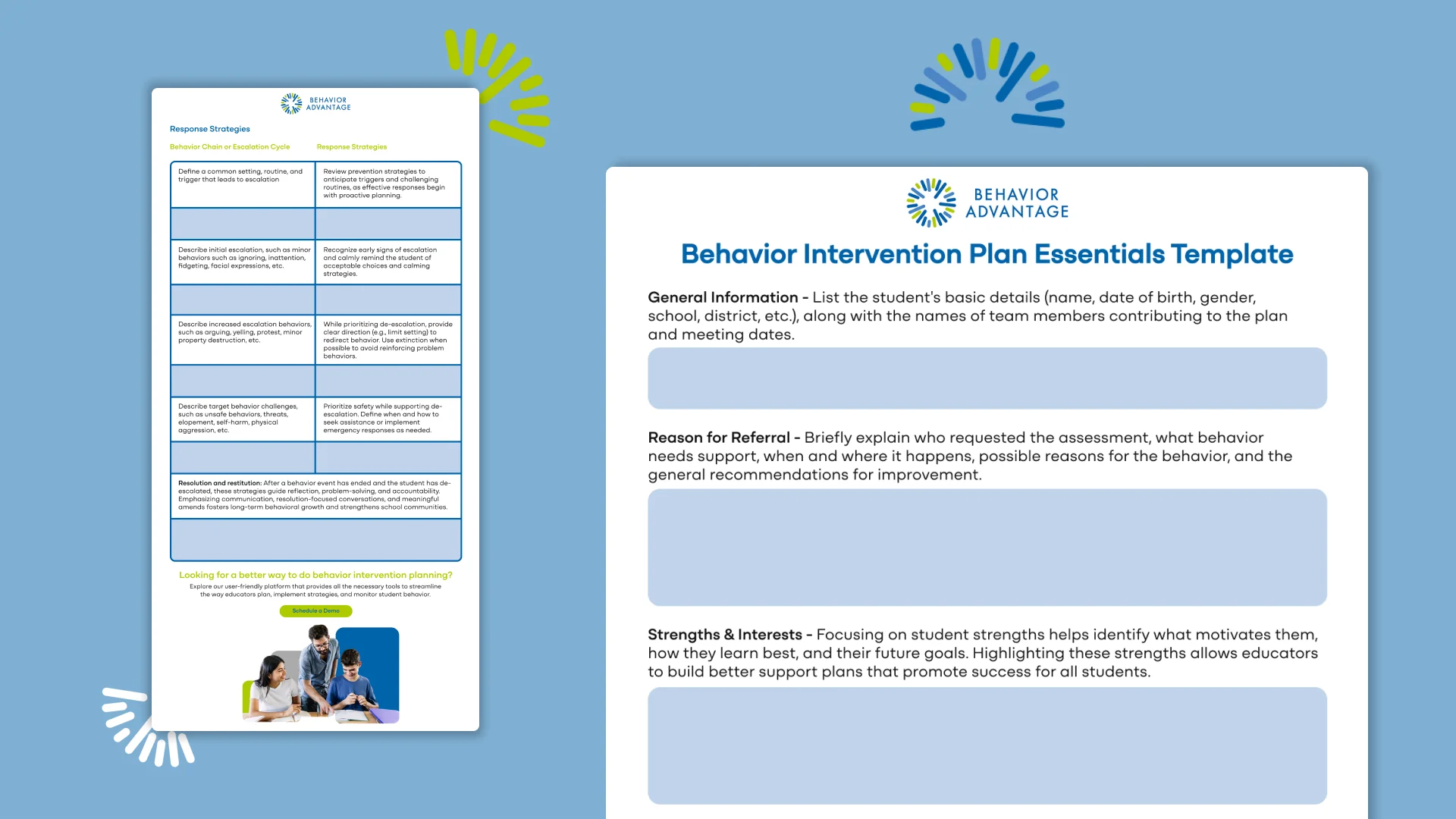To understand what is a BIP, you need to first grasp what it is used for. In that sense, a succinct definition of a BIP would be: the Behavior Intervention Plan is a structured guide that helps encourage positive behavior change. It identifies problem behaviors, outlines prevention strategies, teaches better alternatives, and provides effective ways to respond when challenging behavior arises. Behavior Intervention Plans are best written and supported when developed and implemented by a team. Let’s examine each of the functions of a BIP through examples of common behaviors.
Identify the Function and Problem Behavior for Decrease
Problem behaviors can be identified through a variety of data collection methods like Antecedent-Behavior-Consequence (ABC) analysis, frequency data, duration data, and observational data. Once the problem behavior is identified, you will want to write in a clear, measurable, and subjective way, as if someone new could observe the behavior and know it occurred. Let’s look at some examples of how this is done.
BIP Examples Demonstrating Problem Behavior & Function Identification
Disruption
Disruptive behaviors interfere with teaching, learning, and the classroom environment, and are one of the most commonly reported classroom behavior concerns. These behaviors may include talking out of turn, defiance, aggression, or excessive movement, affecting both the student and their peers. Often rooted in frustration, attention-seeking, or difficulty with self-regulation, these behaviors require proactive strategies like clear expectations, positive reinforcement, and individualized support to maintain a structured and productive classroom.
The BIP sample below shows how to clearly and objectively document disruptive behaviors, making it easier to track incidents consistently and ensure everyone is on the same page when addressing them.

Non-Compliance
Non-compliance interferes with teaching, learning, and the classroom environment and is one of the most commonly reported behavior concerns. This behavior may include refusing to follow directions, arguing with teachers, or deliberately ignoring rules, impacting both the student and their peers. Often rooted in frustration, a need for control, or difficulty managing emotions, non-compliance requires proactive strategies such as clear expectations, consistent consequences, positive reinforcement, and individualized support to foster a respectful and structured learning environment.
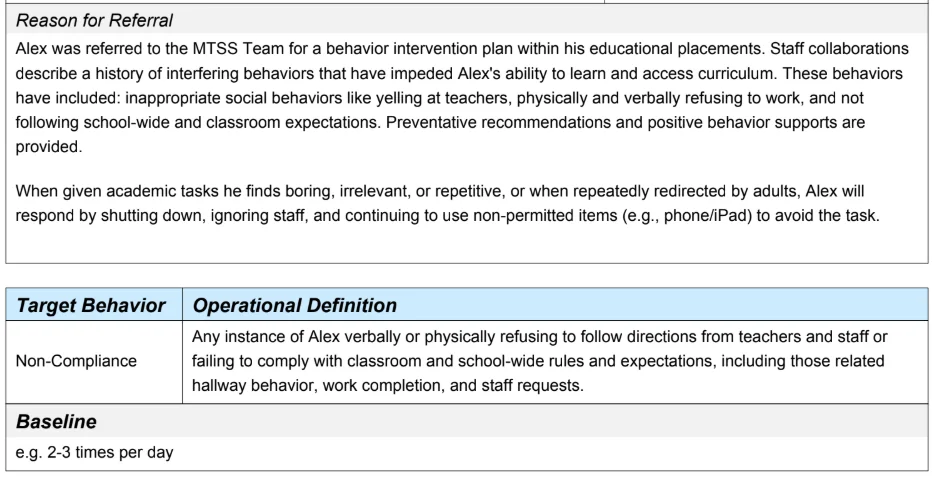
Verbal Aggression
Verbal aggression in the classroom happens when a student uses words or tone to hurt, intimidate, or upset others—whether it’s teachers, peers, or staff. This can look like name-calling, insults, threats, yelling, put-downs, or sarcastic comments. Not only does this behavior cause emotional distress, but it also disrupts the overall learning environment, making it harder for everyone to focus and feel safe.

Elopement
Elopement in the classroom happens when a student leaves the designated area or classroom without permission, usually to avoid tasks, situations, or social interactions they find difficult or uncomfortable. This behavior can disrupt the flow of the class, create safety concerns, and make it harder for both the student and their peers to stay engaged. Elopement may be a way for the student to escape overwhelming situations, and it requires proactive strategies to ensure safety and keep the learning environment intact.

Using a BIP to Outline Prevention Strategies
Instead of jumping straight to how we should respond to problem behaviors, we need to shift our focus to prevention and teaching. A stronger behavior plan prioritizes proactive strategies that prevent issues from happening in the first place while also teaching learners the skills they need to succeed. Response strategies still matter, but they should come after we’ve laid the groundwork for prevention and skill-building.
A good BIP should clearly outline how to put effective strategies into action. Check out these BIP examples, and for a better understanding of the 5:1 Ratio strategy, view this short video:
These examples support prevention strategies for the target behaviors for decrease previously provided.
If you are still having doubts about what a BIP is, read our article on How to write a Behavior Intervention Plan that works.
BIP Samples Containing Prevention Strategies
Disruption
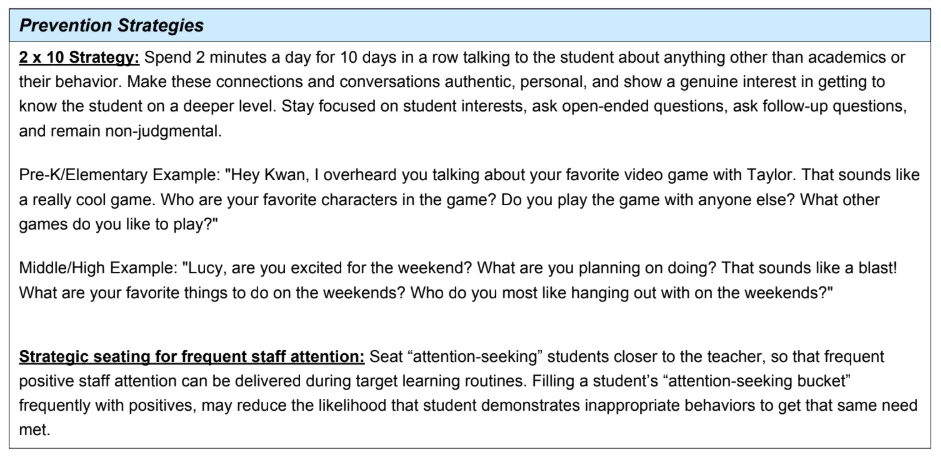
Non-Compliance
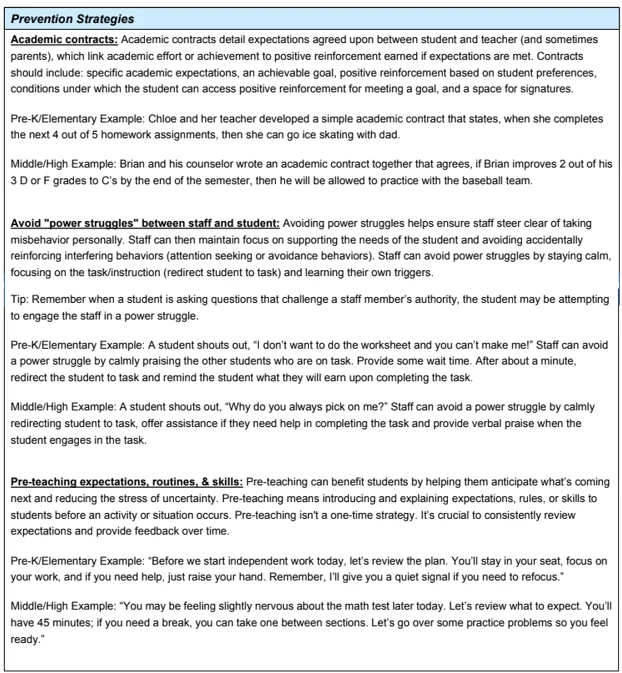
Verbal Aggression
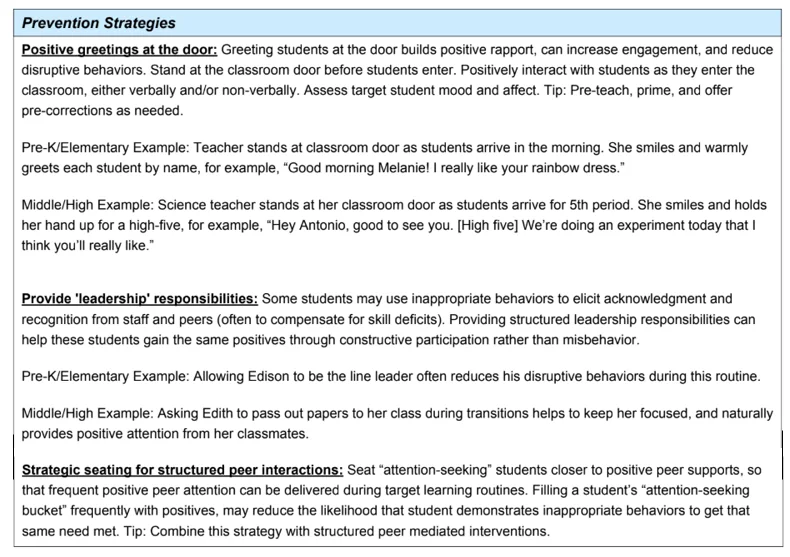
Elopement
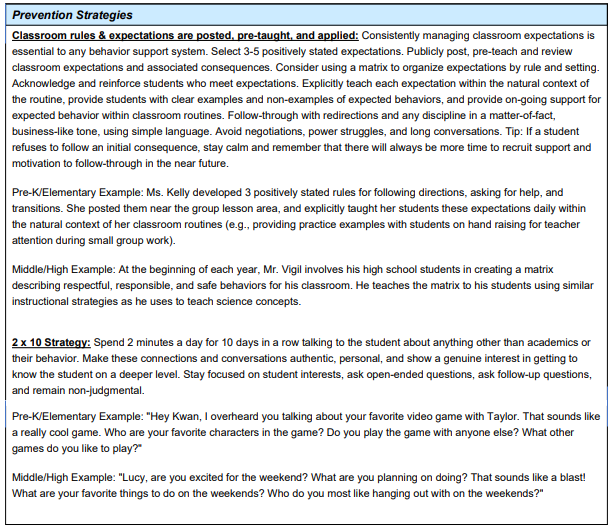
Teach Replacement Behaviors
When discussing what a BIP is, we can’t miss this critical – though often overlooked component of the BIP – identification of replacement behaviors. Often, we focus on stopping the problem behavior, which is necessary, but we need to provide instruction and opportunities for practice for the more desirable behaviors we expect the learner to do. Instruction needs to occur when the learner is calm and ready to learn. This might look like explicit instruction incorporated into the Behavior Intervention Plan to:
- Teach how to ask for a break
- Teach hand raising
- Teach how to request movement
Explore BIP Examples Detailing Replacement Behaviors
Disruption

Non-Compliance
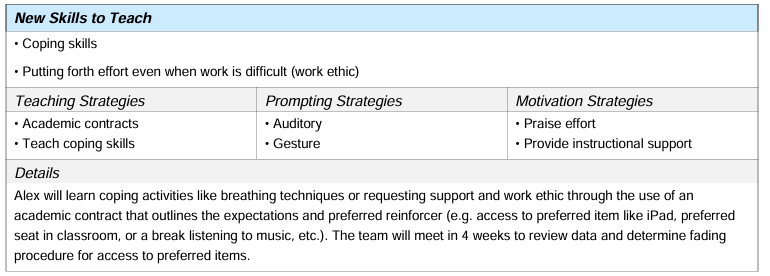
Verbal Aggression
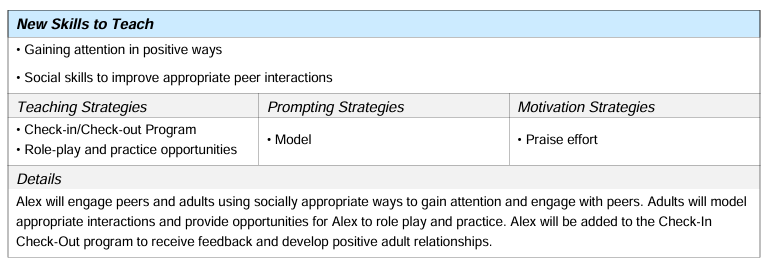
Elopement

Integrating Response Strategies into a Behavior Intervention Plan
Clearly defining response strategies in a Behavior Intervention Plan (BIP) helps ensure consistency when addressing challenging behaviors. When written effectively – while considering the function of the behavior – these strategies help prevent unintentional reinforcement of the problem behavior. A well-designed response plan also makes it easier to catch early signs of escalation and creates opportunities for students to practice the skills they’re working on, which are introduced earlier in the behavior plan.
Examples from BIPs Featuring Response Strategies
Disruption
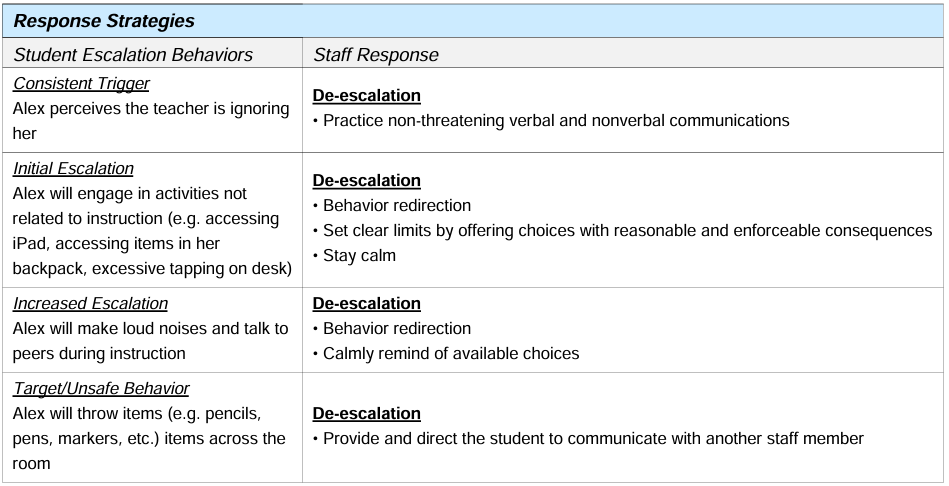
Non-Compliance
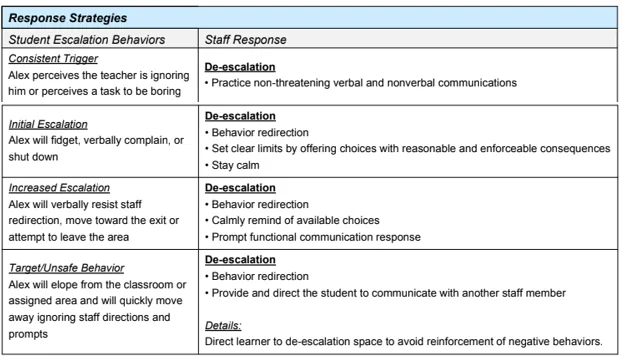
Verbal Aggression
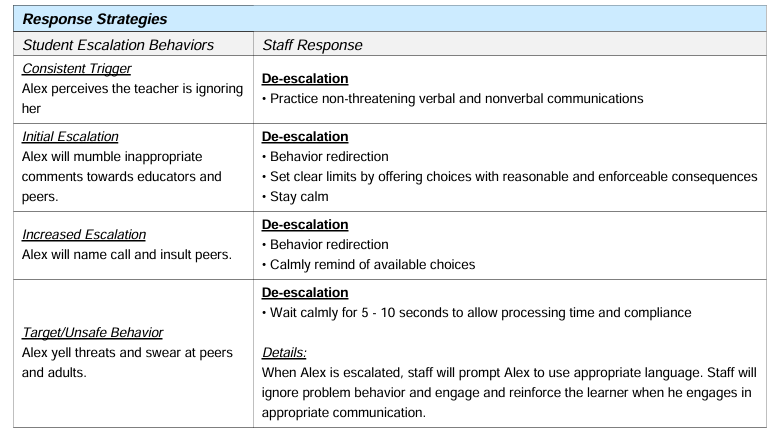
Elopement
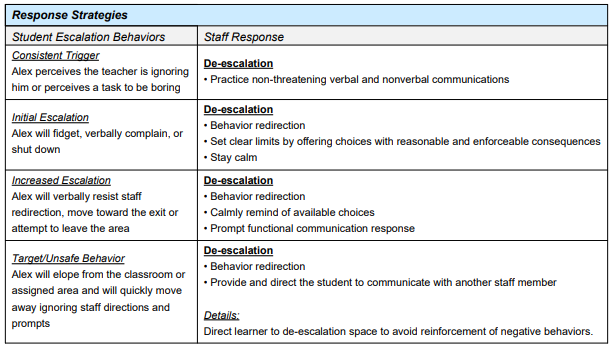
So, What IS a Behavior Intervention Plan (BIP)?
As stated earlier, a Behavior Intervention Plan is a structured guide that helps encourage positive behavior change. As you can see, there are key elements included in a Behavior Intervention Plan that serve as a roadmap for implementation, encouraging learner success and creating long-lasting positive behavior change.
This free Behavior Intervention plan template is a great first step in designing a practical plan to support positive behavior change.Click the image below to grab your copy!
Need Help Designing a Behavior Intervention Plan(BIP)?
Behavior Advantage makes it easier for educators to create effective, function-based behavior plans that focus on prevention and skill-building. Our platform includes built-in tools for team collaboration, professional development, and data tracking—helping schools implement more effective and sustainable behavior interventions. Let’s simplify BIPs together! Schedule a demo today to see how Behavior Advantage can support your school.



